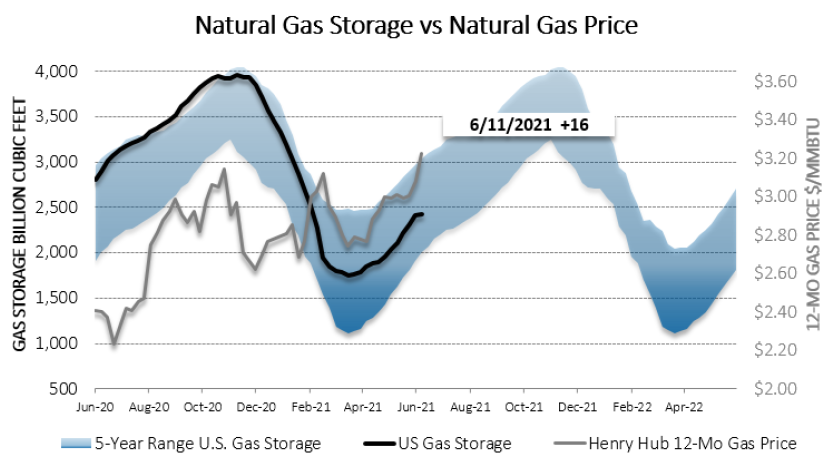POWER MARKETS

WEST Excessive heat warnings have driven demand up across the Western Interconnection and, for reliability purposes, forced CAISO to cut exports to the Desert South-west, where the highest Day Ahead prices have been logged because of insufficient regional capacity to meet peak demand. The Palo Verde trading hub in Arizona and Mead hub in Nevada have had to send price signals high enough to incentivize non-CAISO-sourced power to flow into their regions. Consequently, the on-peak Day Ahead LMP cleared around $1,420/MWh today.
ERCOT Term prices have been mixed this week, still trading well above last week’s levels despite retreating from the highs of this Monday and Tuesday. Summer heat rates have risen as demand has stayed high, intermittent resources have per-formed below expectations, more thermal units than expected are down, and natural gas prices have increased. Meanwhile, real-time prices rose this week on days 13 and 14 during the super-peak hours as typical summer conditions have materialized. In addition, the ORDC adder has climbed near $4.00/MWh, well above that of June 2019 and June 2020.
EAST Like the weather in some parts, prices have cooled off this week. Day Ahead has fallen by approximately $5/MWh in all main hubs except MISO’s Indiana Hub and PJM’s NI Hub. At Indiana Hub, where the weather remains hot, the Day Ahead average is $36/MWh (roughly $3/MWh above last week’s average) and the DART spread is almost zero. At NI Hub, both Day Ahead and Real Time have barely moved since last week, Day Ahead averaging $31/MWh and Real Time averaging $33/MWh.